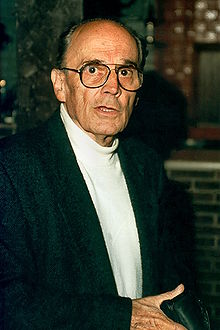Heinz Waaske
| Heinz Waaske | |
|---|---|

Heinz Waaske on 10 June 1995
|
|
| Born | 1924 Berlin |
| Died | 1995 Braunschweig |
| Residence | Braunschweig |
| Nationality | German |
| Occupation | Engineer |
| Employer | Wirgin and Rollei |
| Known for | Inventor of the Rollei 35 and other devices. |
| Spouse(s) | Anita Waaske |
Heinz Waaske (1924 – 1995) was a German camera designer, notably father of the Rollei 35.
Born in Berlin, Heinz Waaske started his career as a precision mechanic apprentice at Telefunken in Sickingenstraße in Berlin, where he studied from 1939 to 1942. After serving in the German army during World War II, being severely wounded and taken prisoner, he joined Krenzin in Berlin-Kreuzberg. There he encountered camera technology for the first time, and developed a great taste for it. For financial reasons, he could not study engineering. He started designing a 16mm miniature camera in his spare time, and sold the prototype in 1948 for 3.000 Marks.
From 1948, Waaske transferred to the Wirgin brothers company in Wiesbaden. He worked as a precision mechanic and soon rose to head of the prototype workshop, to technical designer, and eventually to chief designer. He first improved the medium format 6x9 cameras, allowing cheaper manufacturing procedures.
By then a chief designer, he decided to design a mirror reflex camera, which materialised as the Edixa miniature reflex. Wirgin joined the club of the renowned mirror reflex manufacturers. Waaske further designed all the successors to the Edixa, including the Edixamat reflex and the Edixa Electronica.
When he designed the Edixa 16, Waaske had to design the shutter himself, as suppliers could not provide sufficiently small mechanisms. The Edixa 16 was a camera using the 16 mm film cartridges by Rollei, a cheaper alternative to the expensive Rollei cameras.
Waaske had understood that there was a market for small cameras which would use 135 film rather than the ultra-miniature formats. He made the design in his living room and had Wirgin Musterbau manufacture the parts for the prototype. When Waaske showed the prototype to Wirgin Musterbau, he was told "So, you've wasted my time and my equipment for your own projects?" Wirgin then left the camera business and the company closed.
...
Wikipedia
